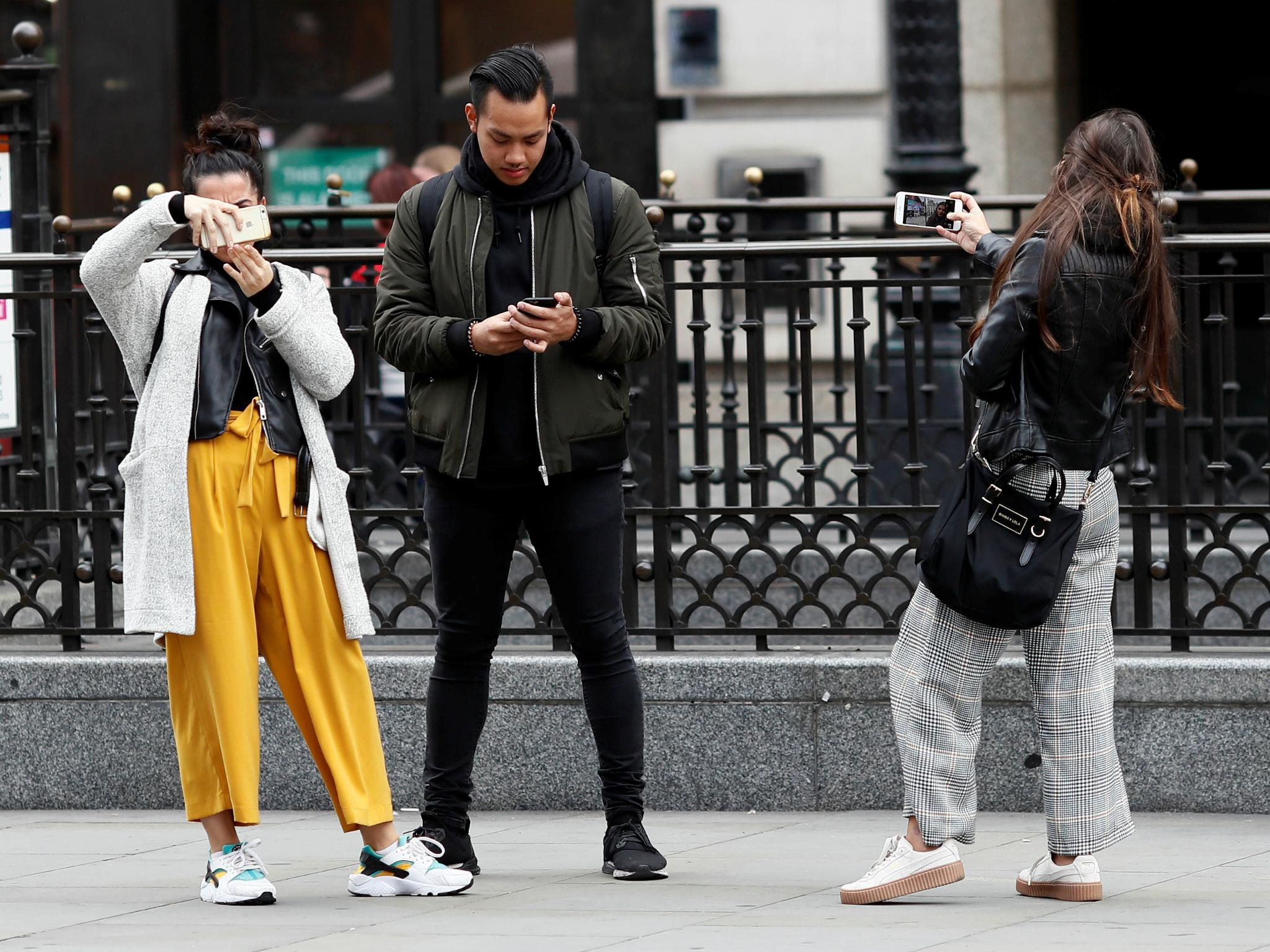The Independent's journalism is supported by our readers. When you purchase through links on our site, we may earn commission.
The surprising tricks Facebook, Instagram and Snapchat use to make smartphones so addictive
The aim of the game for app developers is grabbing users’ attention in any way they can

As smartphones grow increasingly powerful and capable, they’re also becoming more addictive, and Silicon Valley giants are using a variety of techniques to keep users attached to their handsets for as long as possible.
Several of these were revealed by technology engineers in 60 Minutes’ Brain Hacking report this week.
Tristan Harris, a former Google product manager, told the programme that one of the key features Snapchat uses is Snapstreaks.
It shows users how many days in a row they’ve sent a Snapchat picture to their friends. The Snapstreak ends when 24 hours pass without a picture message being exchanged.
“The problem is that kids feel like, ‘Well, now I don’t want to lose my streak,’” explained Mr Harris. “But it turns out that kids actually when they go on vacation are so stressed about their streak that they actually give their password to, like, five other kids to keep their streaks going on their behalf.
“And so you could ask when these features are being designed, are they designed to most help people live their life? Or are they being designed because they’re best at hooking people into using the product?”
According to Mr Harris, the aim of the game for app developers is grabbing users’ attention in any way they can.
Ramsay Brown, who co-founded Dopamine Labs, a startup that builds apps for other companies including fitness firms, told 60 Minutes that algorithms sometimes delay the delivery of Like notifications on apps like Instagram.
He says it’s a way for companies to experiment with users, who might respond to a sudden influx of Likes better – in this case, by using the app more – than they would to a steady stream of notifications.
“They’re holding some of them back for you to let you know later in a big burst,” he said. “There’s some algorithm somewhere that predicted, ‘Hey, for this user right now who is experimental subject 79B3 in experiment 231, we think we can see an improvement in his behaviour if you give it to him in this burst instead of that burst.’”
Mr Brown added that social media sites, including Facebook, Twitter and Instagram, use a continuous scroll because it encourages users to try to find an update worth looking at, and thus keeps them around for longer.
Finally, psychologist Larry Rosen explained to 60 Minutes that users’ brains trigger the release of the hormone cortisol when they put their phone away.
Cortisol is a key component of the fight-or-flight system, but is also commonly known as “the stress hormone” and too much of it can lead to a number of issues related to anxiety.
“What we find is the typical person checks their phone every 15 minutes or less and half of the time they check their phone there is no alert, no notification,” said Mr Rosen.
He explained that when users wonder if they’ve missed a notification, their brain triggers the release of cortisol, which makes them feel anxious.
The only way they can get rid of the feeling is by checking their phone again.
Join our commenting forum
Join thought-provoking conversations, follow other Independent readers and see their replies
Comments
Bookmark popover
Removed from bookmarks